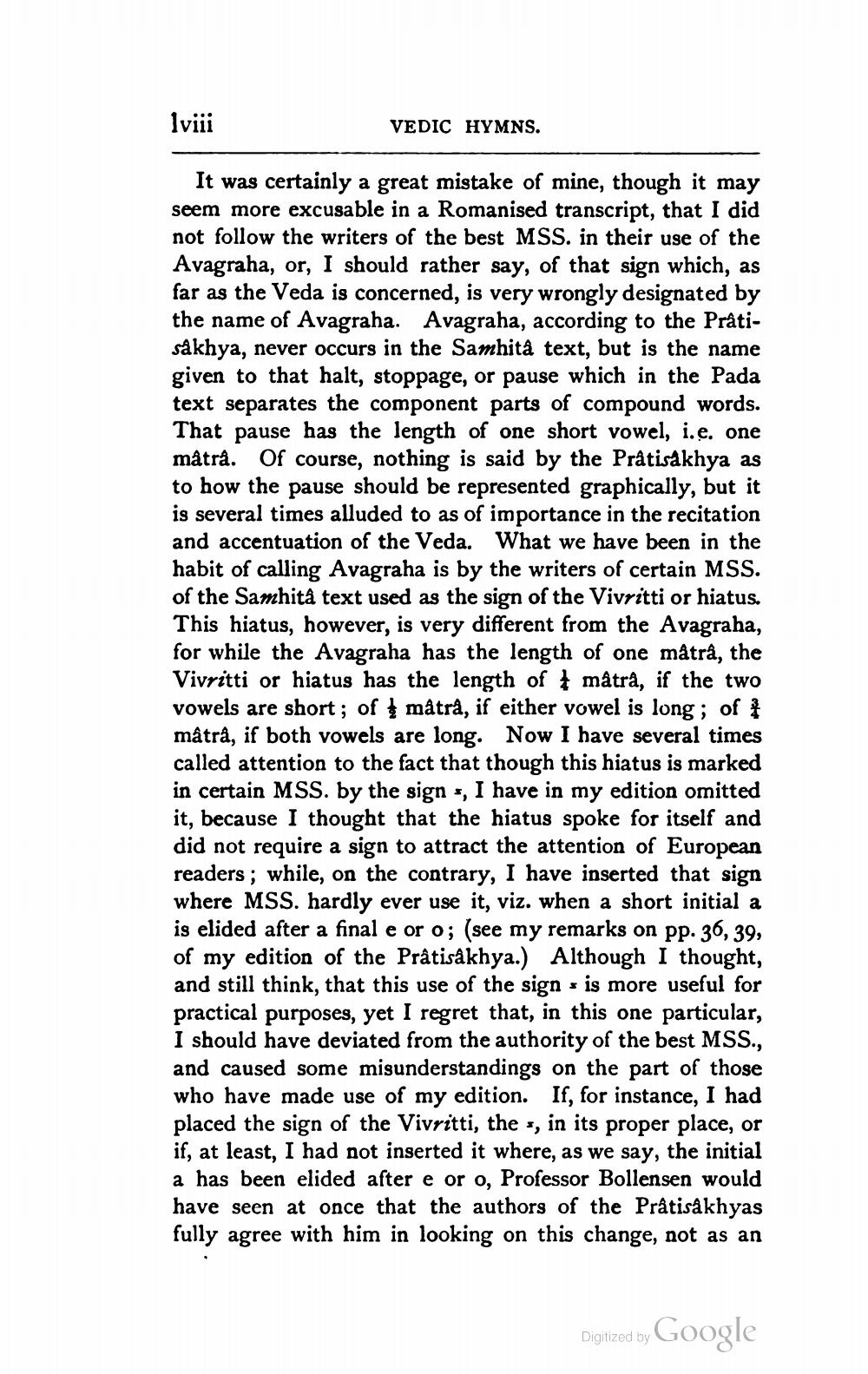________________
Iviii
VEDIC HYMNS.
It was certainly a great mistake of mine, though it may seem more excusable in a Romanised transcript, that I did not follow the writers of the best MSS. in their use of the Avagraha, or, I should rather say, of that sign which, as far as the Veda is concerned, is very wrongly designated by the name of Avagraha. Avagraha, according to the Prâtisåkhya, never occurs in the Samhità text, but is the name given to that halt, stoppage, or pause which in the Pada text separates the component parts of compound words. That pause has the length of one short vowel, i.e. one måtrå. Of course, nothing is said by the Prátisakhya as to how the pause should be represented graphically, but it is several times alluded to as of importance in the recitation and accentuation of the Veda. What we have been in the habit of calling Avagraha is by the writers of certain MSS. of the Samhita text used as the sign of the Vivritti or hiatus. This hiatus, however, is very different from the Avagraha, for while the Avagraha has the length of one måtrâ, the Vivritti or hiatus has the length of t måtrå, if the two vowels are short; of į måtrà, if either vowel is long; off mâtrå, if both vowels are long. Now I have several times called attention to the fact that though this hiatus is marked in certain MSS. by the sign s, I have in my edition omitted it, because I thought that the hiatus spoke for itself and did not require a sign to attract the attention of European readers; while, on the contrary, I have inserted that sign where MSS. hardly ever use it, viz. when a short initial a is elided after a final e or o; (see my remarks on pp. 36, 39, of my edition of the Prâtisåkhya.) Although I thought, and still think, that this use of the sign s is more useful for practical purposes, yet I regret that, in this one particular, I should have deviated from the authority of the best MSS., and caused some misunderstandings on the part of those who have made use of my edition. If, for instance, I had placed the sign of the Vivritti, the s, in its proper place, or if, at least, I had not inserted it where, as we say, the initial a has been elided after e or o, Professor Bollensen would have seen at once that the authors of the Prâtisakhyas fully agree with him in looking on this change, not as an
Digitized by Google




